The Suit Cheat Sheet Every Man Needs
Despite the fact that there are numerous unspoken rules about how to wear a suit, most men who prefer casual styles or have no need to look formal on a daily basis are not aware of them. This is why 5-Minute Crafts is here to give you a hand with a small guidebook of rules you should keep in mind.
1. Jacket
Know its parts and pick the right style.
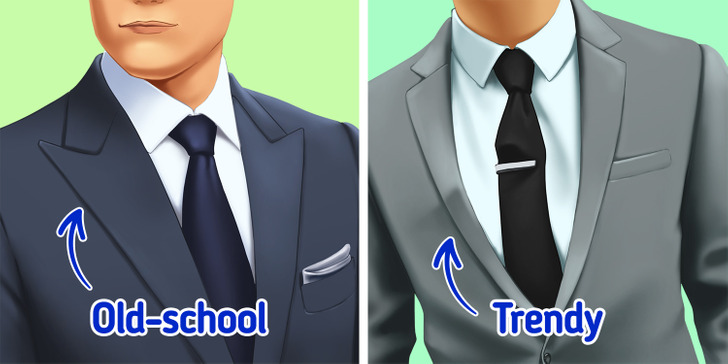
- Buttons. If you’re wearing a two-button jacket, the top button should be at or above the area of your navel. The same goes for the middle button of a three-button jacket.
- Lapels. Your lapels can decide your look, an old-school look or a more trendy one. While wide lapels are considered retro, the thin ones are more fashionable.
- Vents. With vents in the back: the double vents are considered modern.
- Color. Pay attention to the occasion. A gray or charcoal-colored suit is better than a black one unless you need to dress up for a conservative event.
- Pocket square. This sophisticated accessory should not match your tie pattern or the tie’s fabric.
Ensure it fits well.
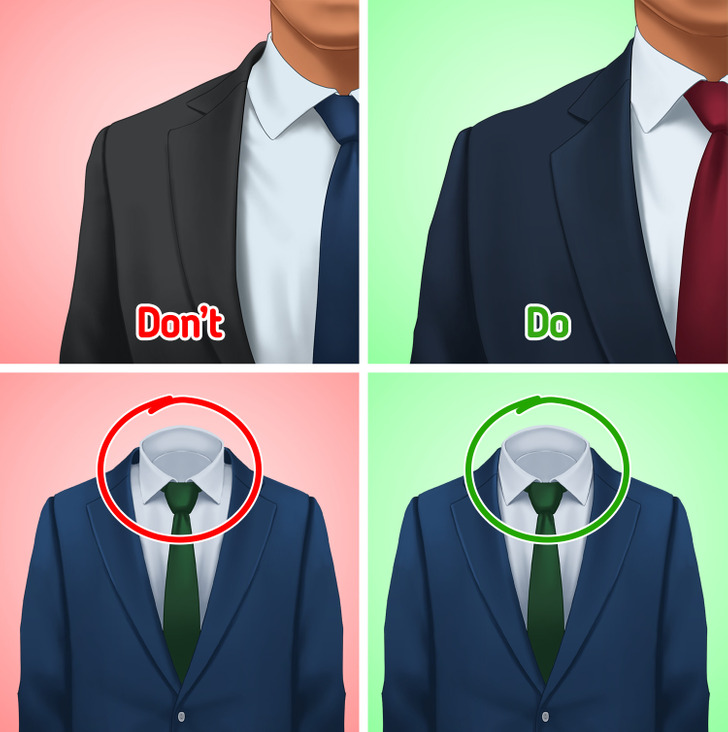
Adjust its length.
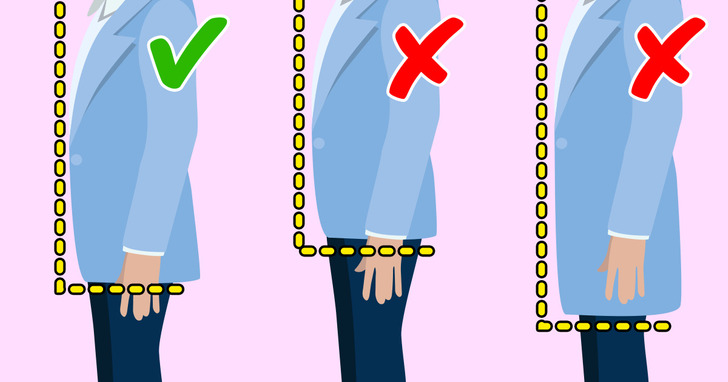
- The right jacket length is essential. It should cover your butt and the zipper of your pants but not go any longer. It shouldn’t pass the waist but fall over the top of your buttocks, where your butt starts to curve inward. Also, the jacket’s hem must be around the middle of your hand or where your fingers meet the palm.
- If its hem rests on your butt with a slight flare at the back, it means it’s too short. If it’s longer than the fingertips, it’s too long. You can alter the skirt part upward. Remember that the front pockets will start to look disproportionate if you go too far, like more than an inch or 2.
Follow the button-up rules.
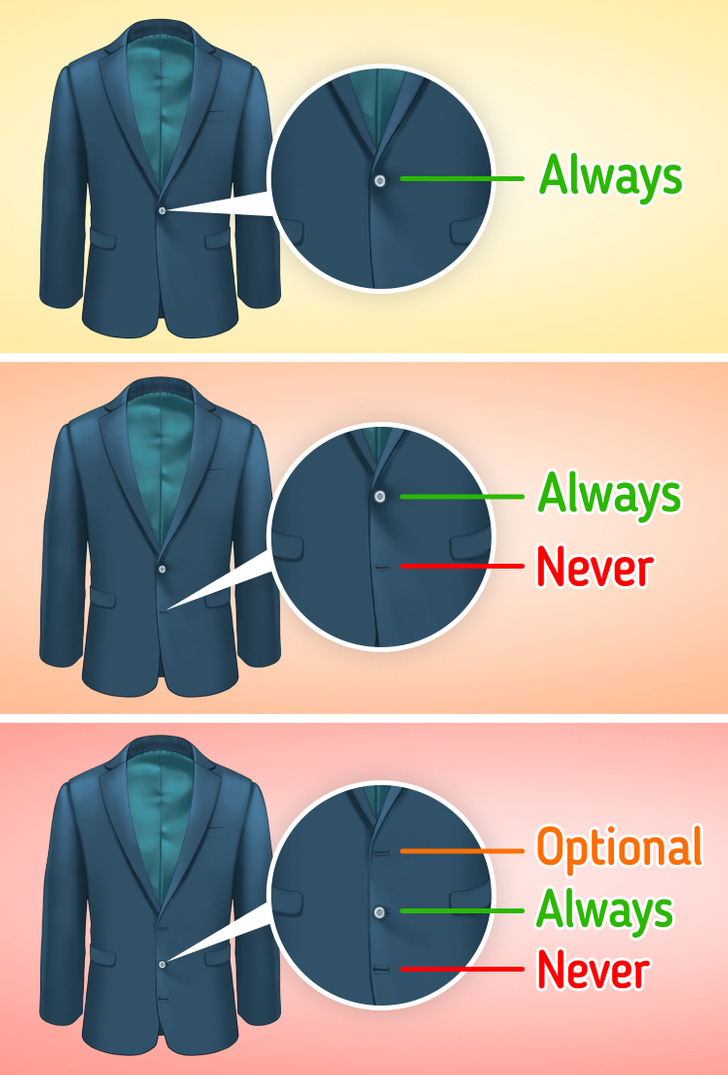
Before wearing your new suit, remove the stitching on the vents and the label on the left sleeve but not from the pockets. It’s better to not sit down without unbuttoning your jacket and to not use your pockets. Make sure to remember these rules regarding the buttons:
- Single button suit. Leave the button fastened while standing, but unbutton it while seated.
- Two-button suit. Leave the top button fastened while standing but keep the lower button unfastened. Unbutton it all when seated.
- Three-button suit. When standing, either fasten the upper and the middle button and leave the lower button undone, or button only the middle one.
2. Shirt
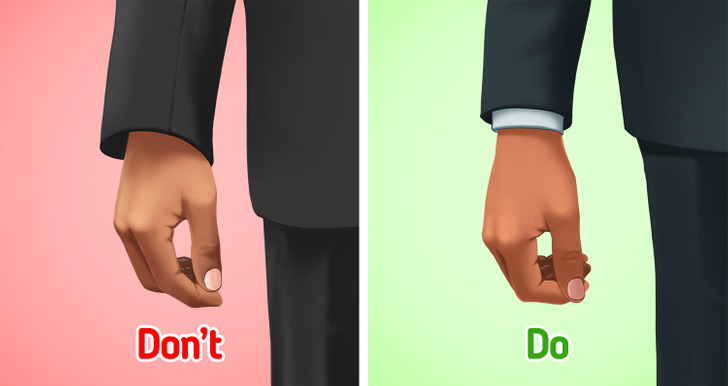
Patterns. Pay attention to your shirt’s and tie’s patterns. They shouldn’t be the same size as it may be distracting and create a busy look overall. Don’t avoid bold patterns.
Collar. If you opt for a timeless look. Be sure to keep the shirt collar smaller.
Cuffs. They must be visible for about half an inch below the jacket sleeve.
Vest. Wear the vest with the lowest button left undone.

- Cufflinks. Make sure to attach them before putting on your shirt. This way, you can easily fasten them. As per the design of the cufflinks, opt for a neutral design so you can match it with different outfits. You can also use contrasting colors to make them stand out under your sleeve. Note that you can always match your cufflinks with accessories like a belt buckle or a watch.
- Watch. Keep the design of your watch as simple as possible. To look refined, go for a plain black leather strap with minimal adornments, for example. Diving or aviator watches can look classy, yet they may add a casual note to your formal outfit. Also, avoid chronographs and smartwatches as they’re more suitable for everyday wear.
3. Trousers and belts.
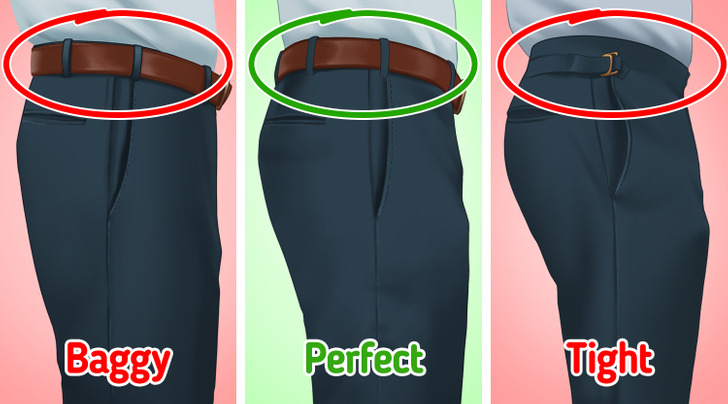
- The belt should be more or less thin and match the color of your shoes.
- Ensure your trousers aren’t hanging low as jeans but that they sit at the height of your hip bone. To achieve a taller look, you can wear them even higher. Never use your pockets.
- Check their tightness. They shouldn’t sag or feel like they’re about to split. Horizontal creases mean that the hips are too tight. To avoid overtight legs, pinch around an inch of fabric on each side of your thighs. More than that may mean, you need a tailor to taper the legs.
- Excess fabric on the hips can ruin your suit look. Be sure to avoid the baggy look on the sides and also be sure that there aren’t any vertical wrinkles on the backs. Also, avoid a look that is too slim from the knees down because it may give off a vibe that is too casual.
4. Socks
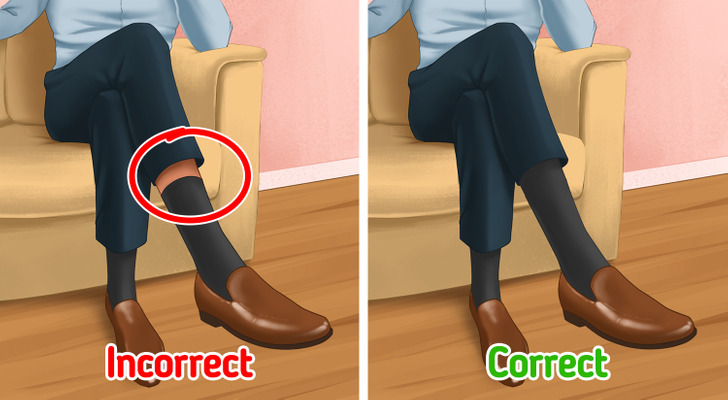
5. Tie and tie-bar
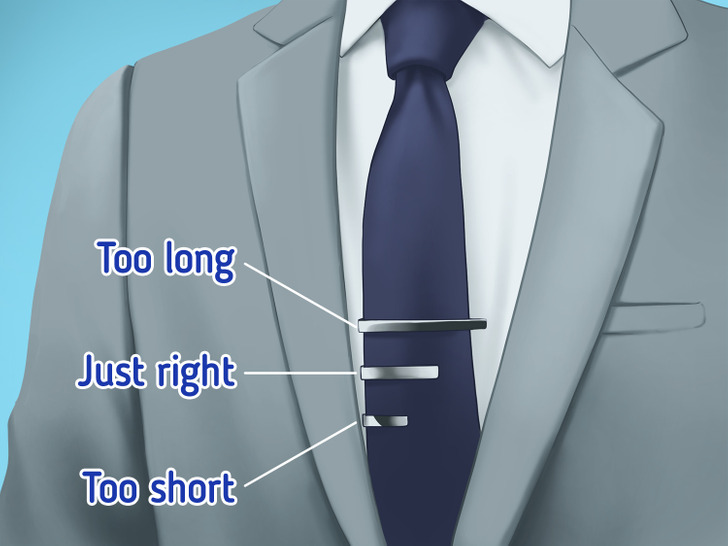
- The tie should always be darker than the shirt. Remember not to tie it in a way that makes it look too long. It should only reach the top of your belt buckle or the waistband of your pants. The width of the tie should match the width of the jacket lapels, check this out for more info. Also, be sure your tie bar isn’t wider than your tie.
6. Shoes
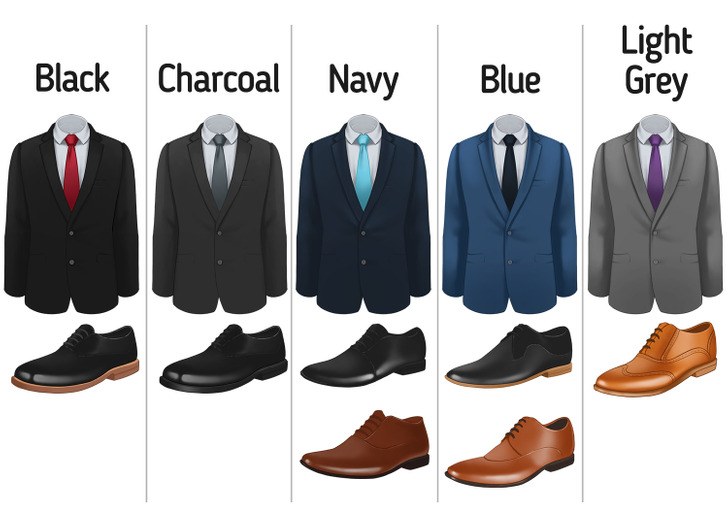
- Black suits go well with black shoes for an impeccable or formal look. Other colors may make you look casual.
- Blue suits match well with brown, black, or burgundy. The same goes for navy suits — remember to go for black shoes.
- Gray suits are good with black shoes, especially with a white shirt. Or you can try various shades of brown shoes.
- Charcoal gray suit requires either plain black shoes or a sophisticated touch of burgundy. Avoid brown leather shoes. Light gray suits go well with a tan leather pair of shoes.
- A champagne-colored suit is suitable for summer events and goes well with all shades of light shoes, like tan, white, or light brown.
- Tan suits are versatile, so feel free to experiment with shoe colors. Burgundy, navy, black, light brown, and tan shoes are all great options.
Bonus: All-season suits
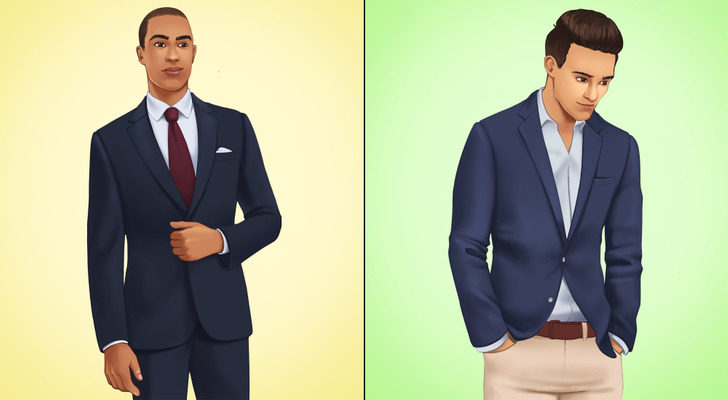
It’s a good idea to have these 2 types of suits in your wardrobe:
- A dark all-season solid suit is a suit for all occasions. The important thing here is that it should not be black, but dark charcoal or navy, as mentioned above. The jacket should be a two-button one with a notch lapel and made of solid fabric, so it is easy to match with different shirt and tie styles and it’s comfortable, regardless of the season.
- A navy blue blazer isn’t exactly a suit. However, it is perfect for a less formal or unclear occasion. You can match it up with jeans or wool trousers. The tie is an optional accessory here. The recommended fabric is hopsack, and you should opt for an unconstructed model to make you feel less rigid.